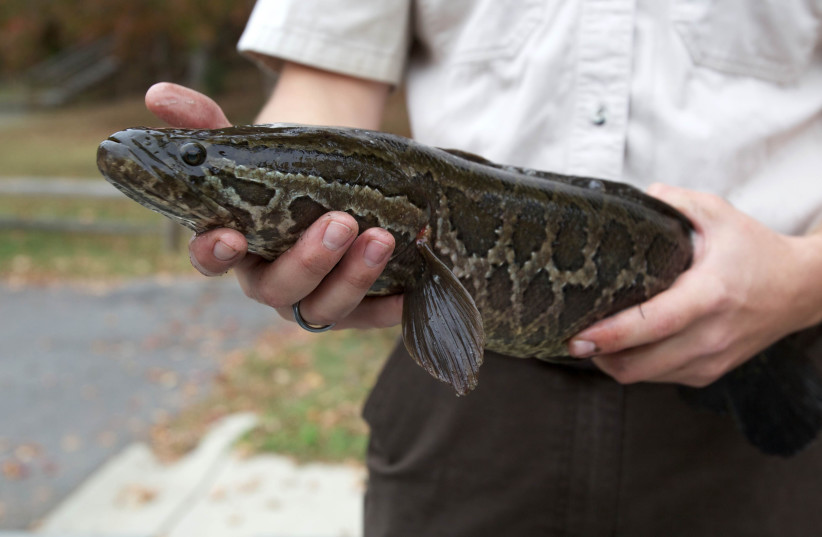Several months ago, staff members of the Duck Creek Preserve in Missouri embarked on a search for bait for a fishing contest. To their surprise, they stumbled upon something far more frightening than anticipated: a northern snakehead, commonly referred to as a "frankenfish."
Measuring approximately 33 cm in length, this dangerous predator earned its nickname due to its serpentine features. Native to Asia and Africa, these invasive species have established a presence in the United States.
The northern snakehead possesses remarkable resilience, breathing air through a unique organ called a suprabranchial chamber.
When swimming near the water's surface, the fish performs a distinctive motion resembling coughing, which expels used air and creates a void that is then filled with fresh air. This adaptation allows the snakehead to venture onto land if its aquatic habitat dries up or becomes overcrowded, enabling it to seek a new watery home.
While not inherently aggressive, the fish will defend its offspring and may attack humans who approach their egg nests or young.

Why is the snakehead fish so concerning?
The snakehead fish first made its appearance in the United States around 2002 when an unfortunate encounter occurred in Crofton, Maryland. The tales of this monstrous creature spread fear throughout the country, inspiring several horror films and earning the unflattering moniker "frankenfish."
However, despite the horror stories that follow it, the northern snakehead is not a mythical monster but rather an aggressive predator that poses a grave threat to marine ecosystems in the United States.
Since its initial sighting, incidents involving the snakehead fish have been reported in 17 states, primarily along the East Coast. A secondary population has emerged in Arkansas since 2008, and recent events in Missouri indicate that this invasive species is spreading into the Midwest, most likely through rivers.
The population of the northern snakehead is rapidly expanding, aided by its ability to breathe air, which provides it with a significant advantage over other fish species. It reproduces five times a year, with each female laying 50,000 eggs per spawning.
There is a growing concern that the snakehead's insatiable appetite could wreak havoc on Missouri's ecosystems, much like it did in Maryland, putting endangered animals such as the American eel, a favored prey of the snakefish, at risk of extinction.
